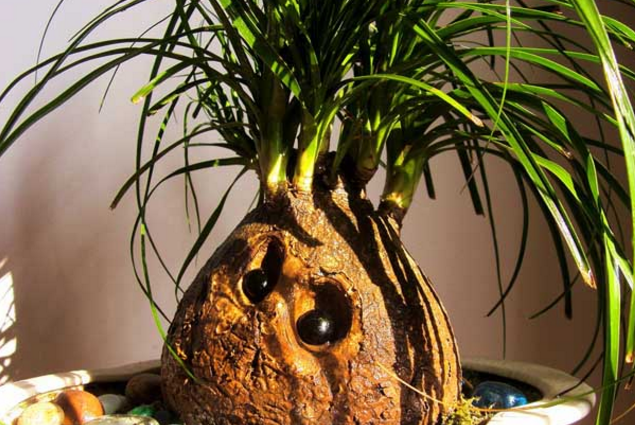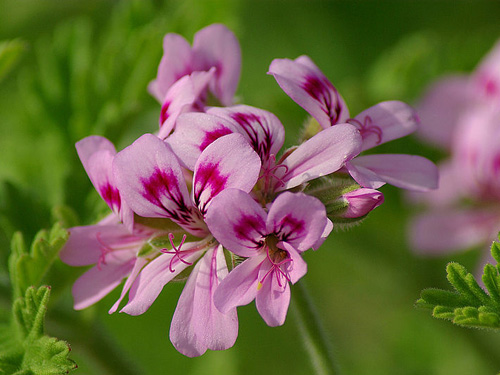How to cultivate and propagate wine bottle orchid
Bottle orchid is an evergreen succulent plant of the tequila family. The stem is erect and the base is very fat, just like a wine bottle. The top group of the stem gives birth to ribbon-shaped slightly leathery blue-green leaves, very similar to the orchid, hence the name wine bottle orchid.
Like plenty of sunlight, the suitable temperature for growth is 20-25 degrees Celsius, it should be properly shaded in summer when it is put outdoors, and it should be placed in a place with sufficient light in spring and autumn. The sufficient supply of fertilizer and water in the growing season is beneficial to the expansion of the base of the stem. But not too much watering, otherwise it will easily lead to rotting roots. Wine bottle orchid is not cold-resistant, the north enters the house before frost, and the room temperature is maintained above 5 degrees Celsius to survive the winter safely.
Potted plants should choose high-waisted pots, and pots should not be too large. The □ diameter of the basin is about 1 × 3 larger than that of the stem base of the bottle orchid. The basin soil can be mixed with garden soil and sandy soil mixed with a small amount of bone powder. Usually change the basin every year, when changing the basin, peel off the old soil around the soil block, and replace it with a large-size basin for planting.

The growth environment of Cymbidium will play an important role in its reproduction. The general ambient temperature of 16-28 ℃ is the best environment. In such a high-quality environment, Cymbidium will thrive. Let's go to the main topic, how to breed the bottle orchid, in fact, it can be roughly divided into two categories, one is the sowing propagation method, the other is the cutting propagation method, about these two kinds of wine orchid reproduction method, the following editor brings you a detailed introduction.
two。 The breeding methods / details of wine bottle orchids are very important.
(1) sowing
Seed selection: in the breeding method of wine bottle orchid, sowing is a very important link, the quality of seed selection will directly determine the sturdiness of wine bottle orchid in the future. The best seed is to choose a new species every year, the shorter the preservation event, the better, because the newer the seed, the higher the germination rate of the bottle orchid. And be sure to check if there are any diseases and insect pests when selecting seeds.
Sowing method: when sowing, first put the tool on the surface of the substrate, the thickness of the cover is generally about 1cm, in the flowerpot into the water, so that the water is less than half of the flowerpot, let the water slowly soak into it, the larger seeds can be directly put into the substrate to cover. The thickness is generally 2-3 times the thickness of the seed, and then you can water it, but don't water too much, just wet the substrate. When watering, it is best to choose a spray can, not directly, otherwise the seed may be washed up.
(2) cutting
Temperature management: the cutting temperature of bottle orchid had better be controlled at 20-30 ℃, because if the temperature is too low, the cuttings will take root slowly, if the temperature is too high, it is easy to cause bacterial infection. The higher the temperature is, the easier it is to infect, so it is very important to control the temperature.
Light management: the vast majority of plants are inseparable from sunlight, wine bottle orchid cuttings need photosynthesis, which can create nutrients for the plant to root and sprout. However, the light should not be too strong, which is not conducive to reproduction, it is best to shield 2/3 of the sun for the best state.
Humidity and moisture: in addition to the above two points, the wine bottle orchid cuttings also need to ensure the humidity of the air, which is the best when the humidity is between 75% and 85%. Of course, all this is established after rooting, because if there is no root, the cuttings can not absorb water to maintain the growth balance in the body, so we need to reduce water evaporation by spraying.
- Prev

Propagation method of Dendrobium
Propagation method of Dendrobium
- Next

Culture method of fragrant leaf geranium (rose geranium)
Fragrant leaf geranium (rose geranium) scientific name: pelargoniumgraveolens alias: touch incense, fragrant sunflower. Families and genera: Pelargoniaceae, pelargonium. Morphological characteristics: perennial herbs or shrubs, up to 1m high, erect stem, base lignified, upper fleshy
Related
- Fuxing push coffee new agricultural production and marketing class: lack of small-scale processing plants
- Jujube rice field leisure farm deep ploughing Yilan for five years to create a space for organic food and play
- Nongyu Farm-A trial of organic papaya for brave women with advanced technology
- Four points for attention in the prevention and control of diseases and insect pests of edible fungi
- How to add nutrient solution to Edible Fungi
- Is there any good way to control edible fungus mites?
- Open Inoculation Technology of Edible Fungi
- Is there any clever way to use fertilizer for edible fungus in winter?
- What agents are used to kill the pathogens of edible fungi in the mushroom shed?
- Rapid drying of Edible Fungi

